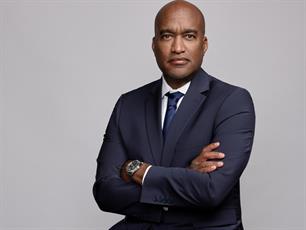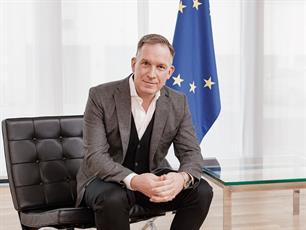Paul Holmes 12 Oct 2007 // 11:00PM GMT
MasterCard’s highly successful initial public offering and corporate brand launch helped the company define its value proposition, establish its industry leadership, and mitigate potential threats to its market valuation. Although MasterCard faced considerable reputational hurdles, including a massive litigation threat and lack of understanding of the company’s business model, MasterCard and the Weber Shandwick team were able to successfully position the company for future growth and support a steady increase in its stock price.
In 2005, MasterCard was poised to become the first former credit card association to go public on the NYSE. Having successfully transitioned from an association to a private share corporation a few years back, the management team was about to change the company’s corporate governance structure, usher in a new set of public shareholders, and complete its transition to a global, fully commercial corporate culture.
But skeptics abounded and press reports were asking tough questions:
• Was this former association’s management team “ready for prime time” as a public company?
• How should Wall Street value the company? (There were no true peers in the category, as VISA was a private association and American Express was a different business model.)
• The company was half the size of VISA…what were its competitive advantages, if any?
• How serious was MasterCard’s much-publicized litigation risk?
MasterCard reinvented itself with the wildly successful “Priceless” campaign (from McCann Erickson) nine years ago. Now, the company had to turn its attention to the corporate side and reinvent itself yet again.
With this in mind, MasterCard partnered with Weber Shandwick and other IPG agencies, including FutureBrand and McCann Erickson, to create an integrated global communications campaign to: articulate a clear corporate strategy and growth plan for the future; instill global confidence in the management team among external and internal stakeholders; create a new corporate brand and differentiate it from MasterCard’s well-known product brand(s); and generate understanding of the company’s business model and competitive advantages
A cross-IPG agency/MasterCard team was charged with designing and executing a brand study to identify MasterCard’s core brand pillars and articulate its enterprise-wide value proposition. After interviewing hundreds of MasterCard executives, customers, merchants and other stakeholders, the team outlined a new corporate brand strategy and developed the new corporate tagline: “The Heart of Commerce.”
This reached beyond the card payments space and embodied the company’s leadership at the heart of global commerce: fueling economic connections, driving business value for customers, and advancing commerce by making it more efficient, secure and convenient. A new logo was developed, and the company even changed its name to “MasterCard Worldwide” to emphasize its one, unified corporate structure worldwide: a key differentiator vs. VISA.
At the same time, Weber Shandwick and MasterCard were working to develop a compelling corporate story for Wall Street in preparation for its upcoming public offering. Peer companies were analyzed, analyst reports poured over, and messaging documents and presentations were created to communicate the company’s business model and global growth strategy.
Incorporating the leading-edge Corporate Brand work, the communications team articulated a differentiated, “three-tiered” business model for the company:
• Franchisor: Leveraging its unsurpassed merchant acceptance network, MasterCard “franchises” a strong family of card brands and stimulates usage.
• Processor: MasterCard is the critical link among banks, businesses, cardholders and merchants; providing authorization, clearing and settlement services.
• Advisor: MasterCard’s global team of experts bring their knowledge and insight to bear in providing strategic and operational solutions to banks.
The team then developed a strategic communications plan to roll out the newly public MasterCard on Listing Day (May 25), and the corporate brand several weeks later (June 28) to sustain momentum and excitement about the company.
Equally important, the combined team designed an internal communications plan to energize MasterCard’s employee base, and ensure they were prepared to “speak with one voice” around the globe. A communications training program would educate employees worldwide about the do’s and don’ts of communicating as a public company.
In the weeks leading up to the IPO, the communications team crafted Q&A’s, messaging documents, call scripts and other materials. Meetings were held at the NYSE to meticulously plan Listing Day interviews for CEO Robert Selander, and a “war room” was set up at company headquarters to manage incoming media calls. A global media tracking system, covering publications in 30 languages, was set up and tested to ensure real-time monitoring of media coverage as it emerged.
With everything locked and loaded, the team was thrown a curveball just weeks before the scheduled IPO when CEO Selander announced that he had been diagnosed with (operable) prostate cancer, delaying the IPO. The team shifted into crisis communications mode, developing statements and Q&A’s, and managed the mini-crisis effectively in the media.
Despite this bump, as well as a volatile environment for IPOs, MasterCard’s listing came off without a hitch and its shares closed up significantly from their initial offering price. Business roundup stories that week featured the MasterCard and day-before Vonage IPO as examples of success (MasterCard) and failure (Vonage).
As planned, following the IPO, the communications team launched the new Corporate Brand with a two-stage plan, first rolling out to employees worldwide, to secure their understanding and buy-in, and then to customers, media and other external stakeholders.
The internal launch of the new corporate brand: the most important component for this former association – was particularly compelling. To ensure that MasterCard’s 4,000 employees would be energized by the new corporate brand, Weber Shandwick brought in IPG agency Jack Morton Worldwide to help design a memorable “World Day” event. This event centered around a one-hour global Webcast that was rolled out in NY, Toronto, St. Louis, Miami, Brussels, Singapore and Dubai.
After an executive address, and brand videos created by the IPG team, six satellite locations then hosted their own regional events. In addition branded environments were created overnight in New York, Brussels and St. Louis to reflect the new corporate brand, to be revealed the day of the event; meeting-in-a-box kits were distributed beforehand to 50 additional locations; a Vision Book was created and distributed to employees to bring corporate brand story to life; and a corporate report was created as the definitive external articulation of the new company
While the primary audience for the Corporate Brand launch was MasterCard employees, the communications team followed through with a media announcement, customer communications materials, and other activities to address external stakeholders. And a plan is currently being developed to establish Global Knowledge Leadership for MasterCard in 2007, which will bring MasterCard’s “Insight” brand pillar to life—at the Heart of Commerce.
A tremendous level of media interest and excitement was generated by the campaign. Hundreds of stories appeared in virtually every print and broadcast media outlet and industry blog around the globe, and pickup of the company’s key messages was clear.
More impressive, the tone and content of the coverage was neutral or positive (a clear win in this case), quoting investment and industry experts who reiterated elements our corporate story. Downplaying concerns over legal liability, media reports focused instead on the company’s enormous potential in the electronic payments sector.
Effective communications supported the company’s stock price, which has soared 153 percent (12/31/06) from its offering price of $39/share. Bruce Cundiff of Javelin Research noted in a blog entry about the rise in stock price: “MasterCard has, in my opinion, been doing a good job of making decent PR decisions (and then following through with communicating them effectively).”
Recognizing that maximizing market capitalization demands a laser-sharp focus on the company’s reputation and public image, the communications team has now developed a leading-edge set of metrics and tools to evaluate and uncover threats to the company’s reputational assets.


































.jpg)





.tmb-135x100.jpg)











